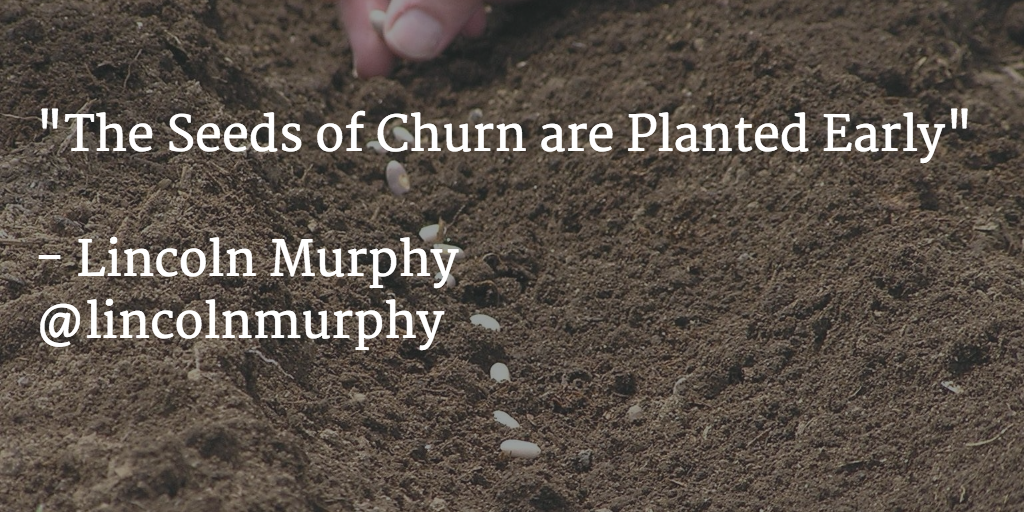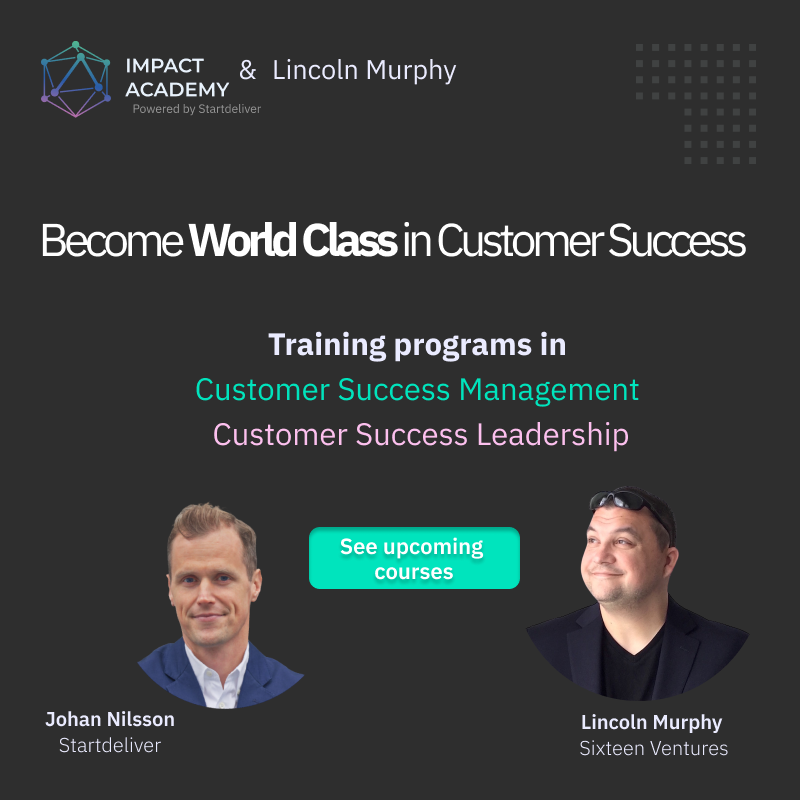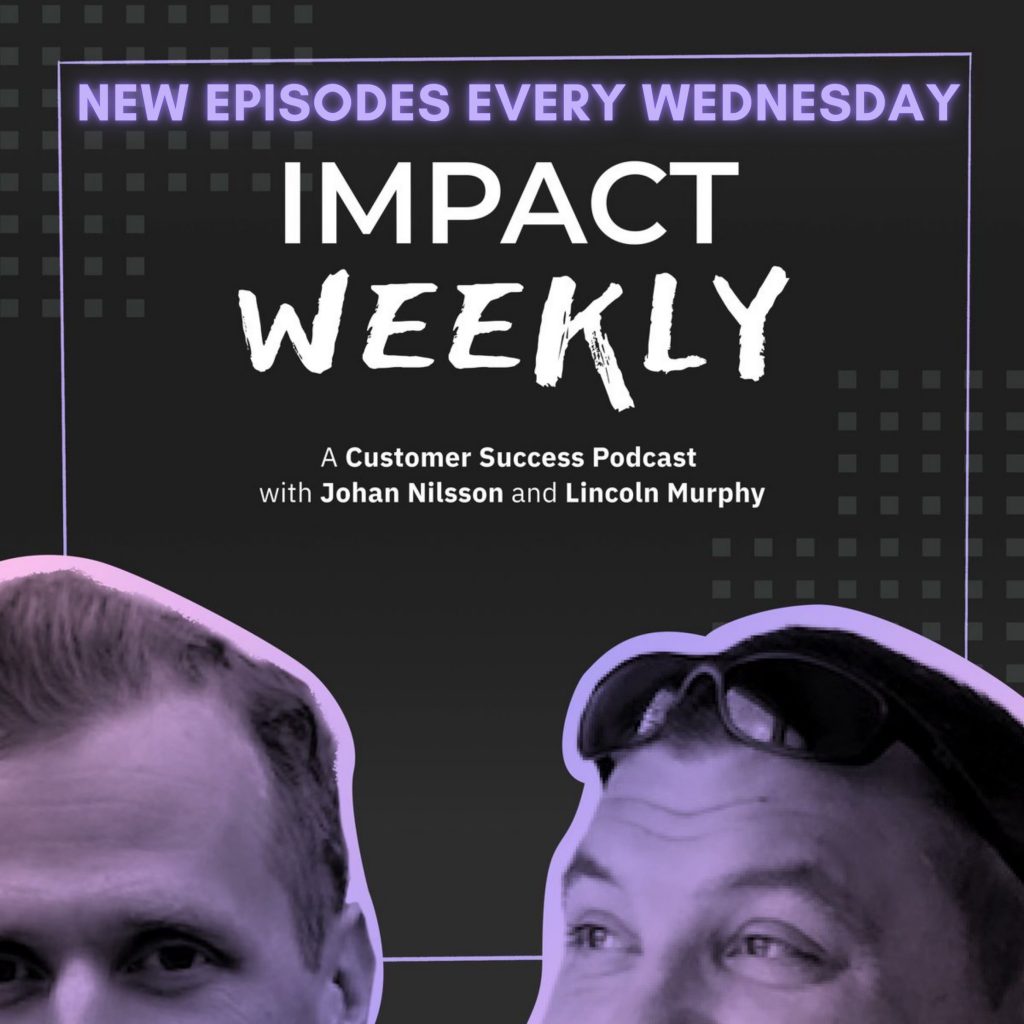 “The Seeds of Churn are Planted Early” is a phrase I came up with in early 2013, published shortly thereafter, and have said and used many times since.
“The Seeds of Churn are Planted Early” is a phrase I came up with in early 2013, published shortly thereafter, and have said and used many times since.
I wanted to go on record with that – BTW, if you see the term’s use outside of my work or that of Gainsight’s, maybe send them this link – but I also wanted to give the origin story of this powerful Customer Success concept.
It was late December 2012 when the CEO of a startup that had a major churn problem contacted me.
They were losing far more customers than they were bringing in – and they were bringing in a lot of customers – and he knew this was clearly not sustainable; I could tell he was worried.
Developing a Churn Hypothesis
Before I flew out to meet with them, I asked them to send over a bunch of data – including exit survey results – as well as for them to answer a bunch of questions.
After preparing for our time together by reviewing the data and their answers to my questions, I had a pretty good hypothesis of what was going on.
That hypothesis became much stronger when one of the guys that greeted me at the door was wearing a “we send email, you make money!” t-shirt!
That was their tag line – “we send email, you make money!” – and, well, it just wasn’t playing out like that for pretty much every customer.
Churn seeds are usually planted early – often during the sales process, especially when trickery is used – but they may take time to sprout
— Lincoln Murphy (@lincolnmurphy) March 15, 2013
Ideal Customers Can Still Churn
This company knew who their Ideal Customers were, targeting a very specific band of customers across a handful of verticals who they knew were already using an email marketing system.
Chances are, if you’re using an email marketing system you know of the potential value of email marketing so education isn’t required… but, also, chances are you’re not getting the value out of it (since most companies don’t) so poaching customers from existing do-it-yourself solutions wasn’t a problem.
And to do that they had a very large group (20+) of outbound sales reps… these weren’t Sales Development Reps (SDRs) or Business Development Associates (BDAs) that would source the lead, maybe do some qualification and set an appointment; these were closers.
They smiled, dialed, got the prospect on a demo right then, and closed the deal… all in one call (they used a nifty little join.me trick to expedite the process).
Completely Mismanaged Expectations
Yes, it was a fairly aggressive outbound sales approach, but it worked; primarily because they were selling what every small business wants; customers. Or, more specifically, sales.
If we’re honest – and marketing or sales method/modality aside – we really just want to buy revenue.
At the same time, while it was aggressive, they weren’t being nefarious or trying to pull one over on the prospects… they honestly believed that if they sent email on behalf of the customers to their mailing lists, given the way the system worked, their customers would make sales.
It’s just that it didn’t work like that and customers were churning; even though they were “active” in the system. They actually had a fairly robust customer onboarding process and customers were adding contacts to the system on a monthly basis (they integrated with a company that would send a box every month to collect business cards, digitize them, and automatically upload to their account), so they were “active.”
But while they were “active” (it’s difficult to know how meaningfully active a customer or user is in a somewhat passive product like this), they certainly weren’t achieving their Desired Outcome; a Desired Outcome which had inadvertently been shaped by their complete mismanagement of expectations in the sales process!
Look, the customers weren’t being unreasonable in saying “you sent an email, I didn’t make money. I quit.” because, well, that’s what they sold.
Diagnosing Customer Churn; Starting at the Sales Process
So we started going through their sales process together and they said “Lincoln, we have a churn problem, not a sales problem, can we focus on the end-of-life issues we brought you here for?”
Yowza… so I said back to that – ever so eloquently – “the seeds of churn are planted early, my friend” … and then I went on to explain that churn is not an end-of-lifecycle issue, it’s a LIFECYCLE issue; meaning it can be caused during – and happen at – anytime in their customer lifecycle.
Yes, once churn happens we can say that was the end of the lifecycle for that customer, but when that actually occurs – contractual issues not withstanding – can be anytime.
The Seeds of Long-Term Success Are Planted Early, Too.
And just so I don’t come off as incredibly glass-half-empty pessimistic – and I have to give a major hat tip to my friend Micky Deming from Kahuna Accounting and the TREPX Entrepreneurial Community for bringing this up – but the seeds of churn aren’t the only thing that can be planted early.
The early days of your relationship with your customer are critical; whatever analogy you want to use (planting seeds, laying a foundation, etc.), just know that whatever happens in the first stage of engagement (a period of time that’s unique to your situation) really does impact the long-term growth of your customer as a customer.
So along with “churn seeds,” the seeds of Massive, Long-Term Success are planted early, too.
It’s maybe harder (though not impossible) to measure that a great onboarding experience directly resulted in the customer staying longer and expanding their use (and the revenue generated from that customer) over time in the same way we can quantify the effects of a poor onboarding experience with churn, but that doesn’t mean those “success seeds” aren’t being planted.
Always remember that Customer Success starts at the first point of contact with the customer and continues across their entire lifecycle… if done correctly, that lifecycle should be much longer than it otherwise would be (more profitable, too!).
It’s pretty simple; plant “success seeds” not “churn seeds” if you want long-term customers.


